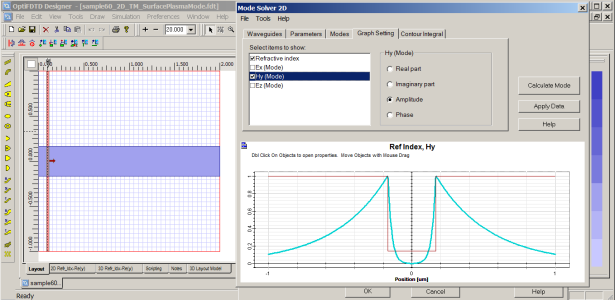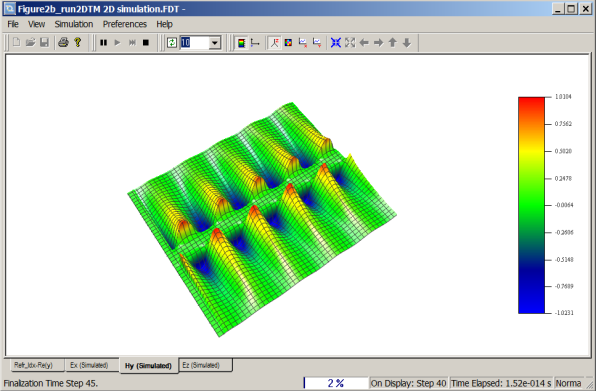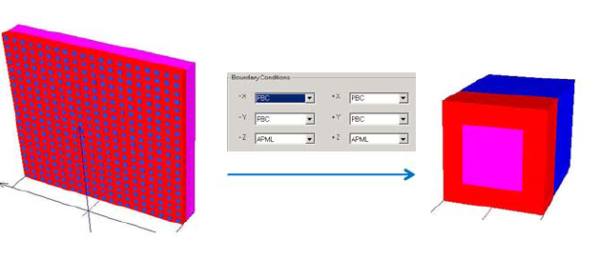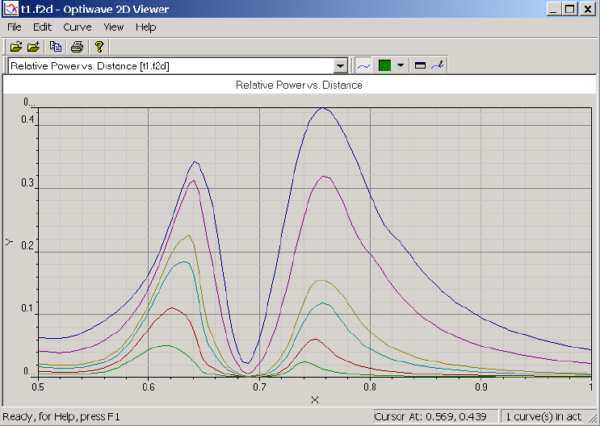Applications
- Sub-wavelength optics
- Data-storage
- Molecular sensors
- Microscopy and Nano imaging
- Photonic chip design
- Bio-photonics
Surface Plasmon Layout
Benefits
- Realistic dynamic near field display. Provides an in-depth understanding of the light wave interaction inside the device
- Built-in noble metal materials library and other dispersive models
- Ability to analyze field enhancement and surface plasmon resonance
- Advanced modeling allows design goals to be achieved quickly and efficiently. This significantly reduces development costs
- Increased speed with non-uniform mesh and 64-bit multi-core processing
Simulation Description
A common concern for surface plasmon modeling is the material properties. OptiFDTD is the first software to employ the Lorentz-Drude model into the FDTD algorithm. OptiFDTD provides a built-in noble metal library along with other dispersive material models for the user to select. For general devices such as nano-particles, nano-wires, nano-holes and nano-lens, OptiFDTD provides a shape library to define complex geometry and periodic layouts. OptiFDTD also provides Visual Basic scripting and a periodic editor for more detailed designing.
The built-in mode solver can solve the surface plasma waveguide. In addition, the observation detector can provide information of the near field distribution and transmission/reflection spectrum.
The following two diagrams are from a silver plate simulation: a) mode solver results; b) FDTD surface wave propagation model.
(a)
Using OptiFDTD, the material model containing both intraband (free-electron) effects and interband (bound-electron) effects can be accurately coupled into the time domain Maxwell’s equation. Both dynamic and steady state electromagnetic properties inside the material can be studied.
Transmission spectrum, reflection spectrum, and far-field analysis allow us to identify the overall performance of the designed devices.
The following sample shows the sub wavelength apertures in gold film. Since the layout is symmetric and our initial wave is normal to the surface, we are able to reduce the design to a single unit cell using periodic boundary conditions.
After scanning the aperture size, we obtain the following transmission curves.






